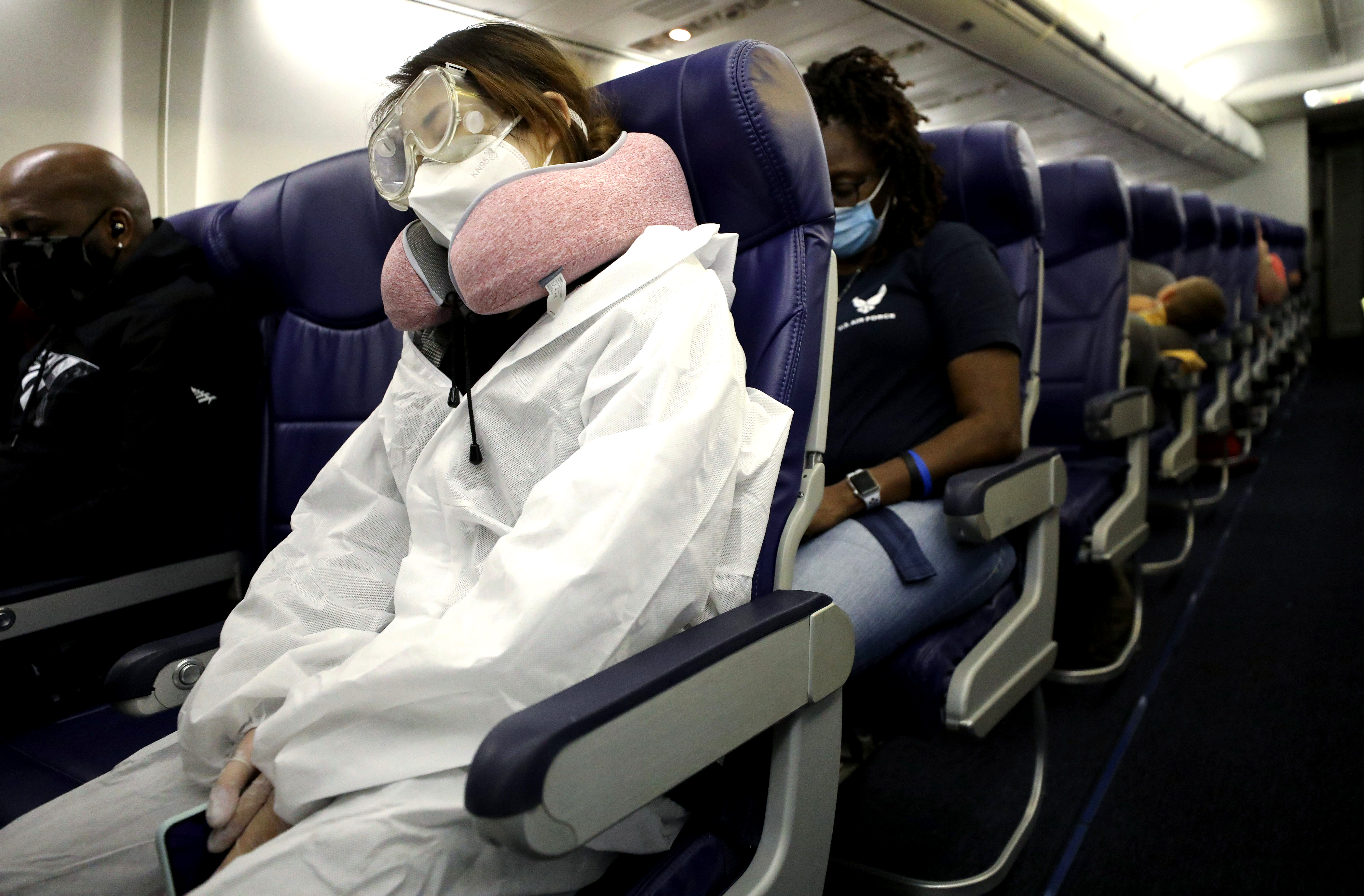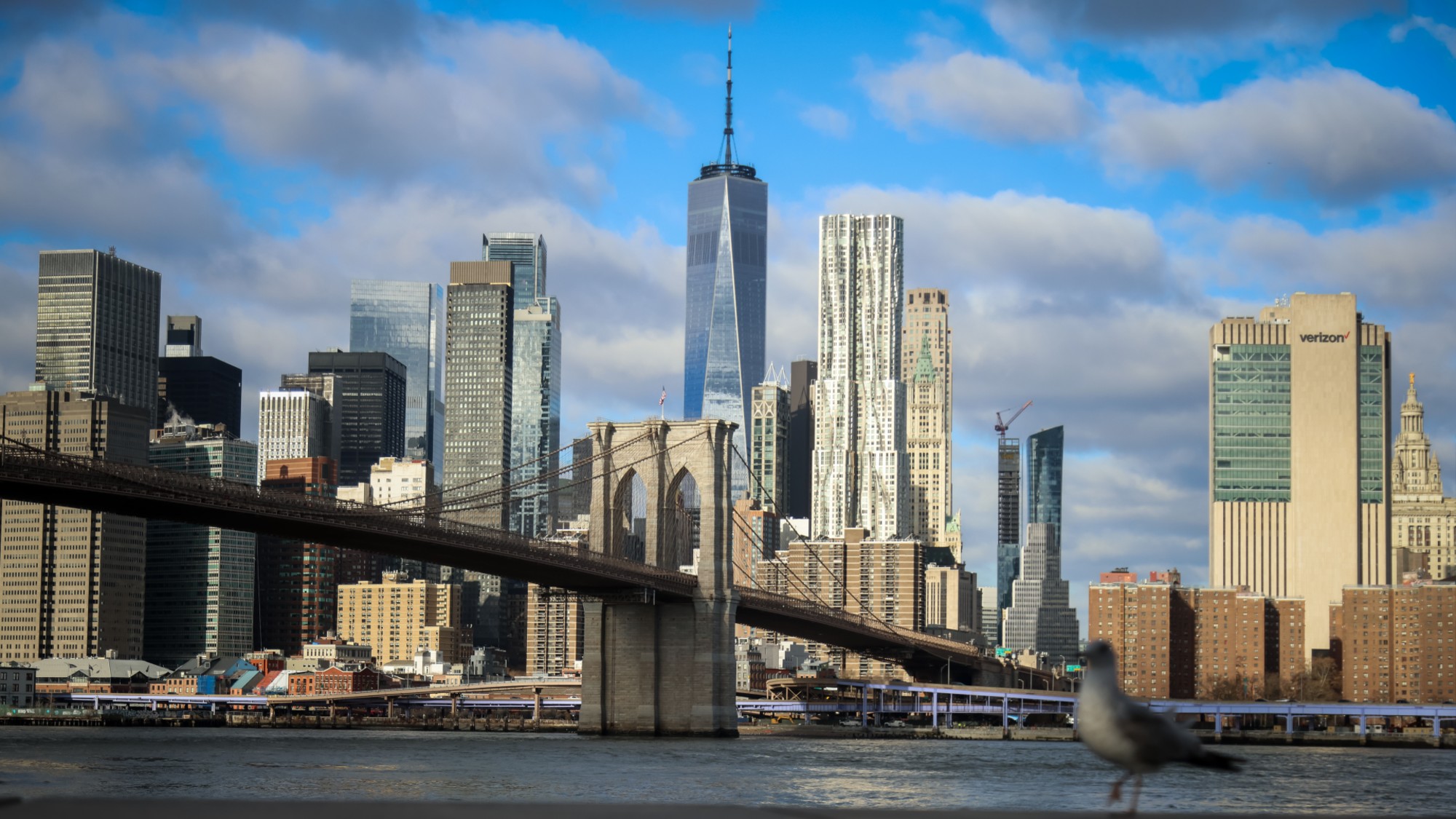Air travel in the coronavirus era
Is it safe to fly?

Passenger traffic has plunged 70 percent and airlines are losing billions. What's the future of flying? Here's everything you need to know:
How safe is it to fly?
Safer than you might think, for an activity that involves strangers congregating for long stretches in a cramped metal tube. "Most viruses and other germs do not spread easily on flights," said the Centers for Disease Control and Prevention, citing commercial airlines' sophisticated air filtration and circulation systems. Airplanes typically refresh their entire air volume every few minutes; recirculated air is pumped through high-efficiency filters that remove 99.97 percent of virus-size particles. The primary risk in flying is that an infected passenger could sit next to or near you and exhale, cough, or sneeze virus-laden droplets that you'd breathe in before they were filtered out. But while evidence is limited, the "data to date suggest only rare possible occurrences of in-flight transmission" of COVID-19, said Lin Chen, a Harvard Medical School professor and expert in travel medicine. When 12 infected passengers flew from the U.S. to Taiwan in March, there were no confirmed infections among the other 328 people on board. However, a recent study found that two passengers were infected by other passengers sitting across the aisle from them after a four-hour flight from Tel Aviv to Frankfurt in March. On a flight from the U.K. to Vietnam the same month, one passenger apparently spread the virus to 14 passengers and a crew member.
The Week
Escape your echo chamber. Get the facts behind the news, plus analysis from multiple perspectives.

Sign up for The Week's Free Newsletters
From our morning news briefing to a weekly Good News Newsletter, get the best of The Week delivered directly to your inbox.
From our morning news briefing to a weekly Good News Newsletter, get the best of The Week delivered directly to your inbox.
What safety precautions are airlines taking?
Between flights, planes are routinely sprayed with a fog of electrostatic disinfectant and otherwise sanitized. Many airlines have dialed back food and drink service to cut down on interaction between passengers and crew, and board planes from back to front to reduce passenger contact. And some have limited passenger capacity to increase distancing. Delta and JetBlue keep middle seats empty, while Southwest books flights to no more than two-thirds capacity. American and United have no such limits, though both allow passengers to rebook high-volume flights without charge, and attempt to alert passengers when flights are filling up.
What about masks?
In late April, JetBlue became the first airline to require masks; all major airlines now mandate them. In the early days there was spotty compliance, and some airlines adopted a hands-off policy to avoid confrontations, instructing flight attendants not to challenge maskless passengers. But they've since cracked down, with American and Southwest ending medical exemptions. Maskless passengers have been removed from flights in some cases, and many have been placed on no-fly lists. (That's what happened last week to Robert O'Neill, the Navy SEAL who killed Osama bin Laden, after he refused to mask up on a Delta flight.) Flight attendant and pilot unions have asked for a blanket federal rule requiring masks on flights. "[We] need the backing of the government and clear consequences for those who don't comply," said Sara Nelson, president of the Association of Flight Attendants. But the airlines have opposed a federal mask mandate, saying their own rules are adequate and they don't want the industry to be singled out.
A free daily email with the biggest news stories of the day – and the best features from TheWeek.com
How big a hit has the industry taken?
A huge one. In April, passenger traffic cratered to around 4 percent of the usual number; since then it's revived somewhat, but it's still running about 70 percent below pre-pandemic levels. The financial fallout has been massive. The four largest U.S. airlines lost a combined $10 billion from April through June; this year, U.S. carriers are expected to lose $84 billion, which would make it the worst year in aviation history. And with steep infection rates across much of the U.S. and surveys showing many Americans are wary of flying, there's no recovery in sight. U.S. airlines received a $25 billion bailout through the Cares Act; as part of the deal they can't lay off staff until Oct. 1. They've scaled back the workforce through buyouts and early retirements but have given notice that without another bailout, mass layoffs are in store this fall. United said it could furlough 36,000 employees, nearly half its U.S. workforce; American says 25,000 of its workers may face layoffs.
What's the long-term outlook?
Nobody expects a quick turnaround. After 9/11, ridership was depressed for years and airlines didn't become profitable again until 2007. Industry officials do not anticipate a full recovery until 2024, and some believe passenger volume may never return to pre-pandemic heights. "It's going to be a slower and more uneven recovery than one might have expected," said Standard & Poor's analyst Philip Baggaley. Business travel, which has provided airlines with a large percentage of their profits, may never fully bounce back now that videoconferencing has become standard. What the industry will look like by the time the pandemic is over is very unclear. Some major airlines could go under, and some analysts predict mergers and takeovers. "Airlines are going to fall by the wayside," said industry analyst John Strickland. "I feel sadly sure that aviation is going to be much smaller."
What passengers can expect
In future years, airline passengers can expect new safety measures when they arrive at the airport. Some airports are testing thermal screeners to detect people with fevers, and industry experts say there may also be advanced health screenings that measure heart rates and blood-oxygen levels. Facial recognition technology — already in the works — may cut down on the need for interacting with touchscreens and airport personnel. Planes may be outfitted with protective shields or staggered seating arrangements; ultraviolet wands and antimicrobial surfaces may be utilized to kill viruses. On the price front, expect depressed fares in the short term to lure passengers back, but higher ones in the long run as airlines try to recoup losses; an analysis by the Dollar Flight Club predicts fares will double between 2021 and 2025. Seats may get even closer together, and fees may continue to rise. When food and drinks return, they could carry steep charges, and some expect baggage fees to spike. Throw a long-lasting decline in international travel into the mix, said David Fickling at Bloomberg, and "the industry that emerges from coronavirus will be nasty, brutish, and short-haul."
This article was first published in the latest issue of The Week magazine. If you want to read more like it, you can try six risk-free issues of the magazine here.
-
 Most data centers are being built in the wrong climate
Most data centers are being built in the wrong climateThe explainer Data centers require substantial water and energy. But certain locations are more strained than others, mainly due to rising temperatures.
-
 ‘Maps are the ideal metaphor for our models of what the world might be’
‘Maps are the ideal metaphor for our models of what the world might be’Instant Opinion Opinion, comment and editorials of the day
-
 What is China doing in Latin America?
What is China doing in Latin America?Today’s Big Question Beijing offers itself as an alternative to U.S. dominance